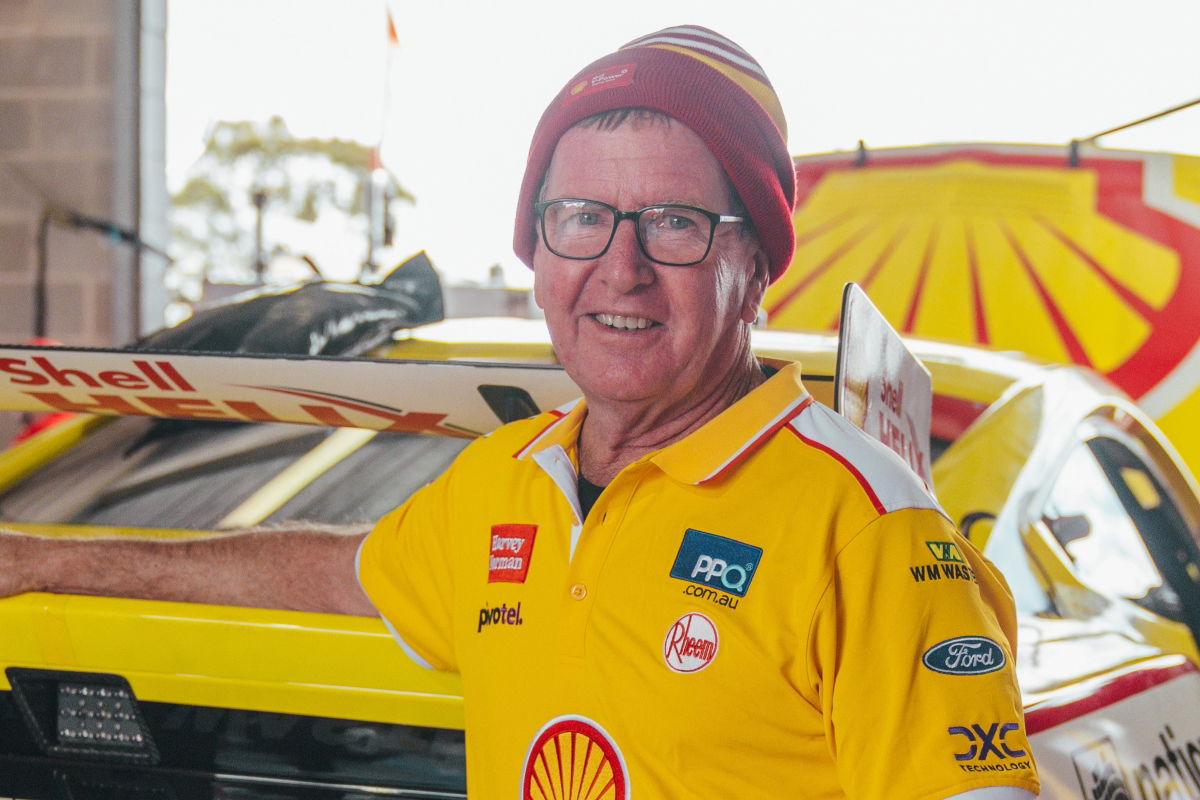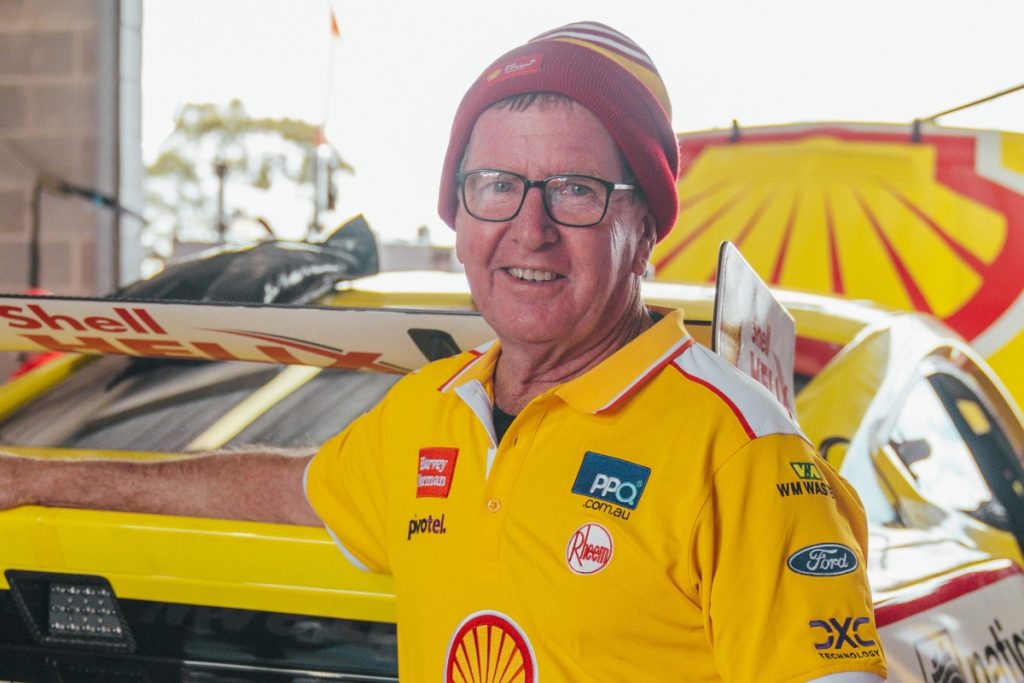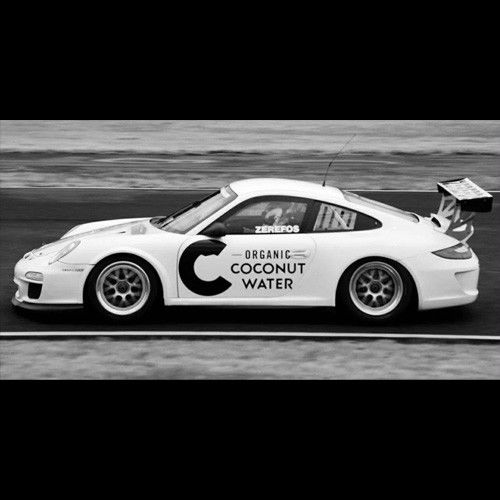

A milestone 45 years is just around the corner for Keith Chesterton as a panel beater and spray painter, something that was a not goal when he first looked at his career path.
He hails from the Northern Beaches in Sydney and has the blue blood of NSW running through his veins, much to the consternation of those he works with and for at Dick Johnson Racing in Queensland.
When he left school, he had the odd job making shower screens. His brother knew a guy at the Commercial Auto Repairs panel shop in Brookvale. They took him on although he had no intentions of becoming a panel beater.
“I tried to join the army and become a diesel mechanic. My maths weren’t real good in speed tests and I was only 15. I really had no idea what panel beating was, yet 45 years later, I’m still doing it.
“I don’t think they are still going, but the guy’s name was Eric Harrison. His nickname was Dick. It was quite funny; I started my working life with a guy we used to call Dick and I’m finish up with Dick Johnson.”
A friend whose dad was a Speedway photographer at the showgrounds lured him to his first racing experience, on Saturday nights and Keith loved the bikes. He also went to Bathurst with them. It was 1974 where Goss and Bartlett won in the rain. That’s where he started getting interested in motor racing, but as for experience, he had none whatsoever.
In 1979 Colin Bond had an article about the Round Australia Rally in a motoring magazine which stated that he was looking for helpers.
“Back then all teams relied on helpers. The article said they might have a fulltime position. Anyway, I sent a letter and next thing (after Bond replied) he asked me to come over to Crows Nest where they were preparing the Escorts for the Bega Rally.
“A couple of days later I got the job. I was astounded. I started on June 6 in 1979 with Bob Riley. The team was away at Bega, I finished my job on Friday and started there on Saturday to ready for the Round Australia.
“That was three months of chaos, but we did get there. That was my first actual motor racing event, the Round Australia Reliability Trial.
“We were just chasing ourselves from Day 1. We didn’t have test time. I think Bondy’s car was meant to be the test car and I’m sure that the car would end up going around Australia.
“Bondy was leading out of Perth, and I think they did a stage out of Waneroo. He went straight on at Turn 1 and rolled it. They ran out of late time fixing it, so it became the chase car.”
The drivers of the other two Cortinas, Greg Carr and George Fury finished fifth and 25th respectively.
“In 1979 we had World Rally Champion, Sweden’s Björn Waldegård come out. Bondy and Greg were in the two BDA Escorts and Bjorn was in the brand new George Smith-built car.
“He just blew everyone away. The following year we had Ari Vatanen come out and drive Bondy’s rebirth car, a left hand drive one we did for him.”
The rally programme finished at the end of 1980 and Bond went back to circuit racing with Masterton Homes and driving the V6 Capris in the Amscar Series. Keith was sublease to Riley in his rally workshop which meant far less travel each day.
They did a rally in New Guinea and the 1982 World Rally Championship round in New Zealand in an ex-works Escort with Jean-Louis Leyraud and finished seventh outright. Keith also worked on customer cars that competed in state rounds.
He worked at Riley’s for around three years and took time out to assist John Goss’ efforts at Bathurst with the Jaguar in ‘82.
Bond was in touch with Keith again when the Group A Alfa came along, to drive the transporter. There were two Bathurst races in that time, the second of which resulted in a under 3.0lt class win for Bond and Gregg Hansford.
“I went to the Adelaide Grand Prix with Bondy and a friend of mine who was helping Dick, Dennis Brown who Keith had done some rallies with, said Dick wanted to talk.
“He said, ‘I hear you’re looking for a job, you like to work on Sierras? When can you be in Queensland?’ That was pretty well the interview.”
Keith started at DJR in December 86. Returned home for Christmas and moved to the Sunshine State for ‘87. He was employed as a panel beater and helped in the build of two bodyshells.
“There was only five of us and they were going to send the cars out to get painted. I said I would have a crack at that.”
They made an open frame tent off the side of the building. He was painting the bodyshells, but the problem is they had was Greenfield Mowers next door.
“They would try their lawn mowers out and next thing a dust storm would come in, so we would have to quickly drop the flaps so the dust wouldn’t get on the new paint. It was quite funny the things we used to do, and you could get away with, nowadays no way.
“They also turned a blind eye to when guys were working, preparing cars all night, getting less than an hour’s sleep in the back of the truck.”
Proudly Keith has worked on cars in Group C, Group A, and then the progression from the Falcon up to the Gen 3 Mustang. His favourite car is still the Sierra because that gave him his first championship and Bathurst win.
“They were just a rocket. And we were lucky we had two guys that could draw them. Gregg and I ended up very good friends. He struggled in them. He didn’t have everything his way. Dick was the #1 driver. When we got John Bowe, they just gelled and that it’s just history how those two work together.”
In the modern era, wrap has become very popular. “DJR has a sign guy, Scotty Ruddock, and everyone thinks they’re fully wrapped, they’re not. We still paint our cars, most of the red is paint. The bonnet and turret are wrapped.
“We still paint the cars, so there is something for the wrap to stick to. I still like shiny paint, it still looks good, so it’s half and half.”
Keith works together with the sign guy, and they come up with what’s a good outcome for both, because sometimes a wrap is hard to get into some places, so he’ll paint it. From the Sierra days he was applied the stickers.
Only the indigenous liveries are fully wrapped by Scott. He did all the plotting and the applying. At the last two Darwin rounds they have been the best presented liveries.
With aerodynamics and weight very much a priority, the engineers are forever on his case.
“When we do our cars, if they’re new panels, they’ll get a coat of primer, one coat of white and one coat of red straight over.
“We normally get the vinyl sample off PPG in Melbourne. They’ll mix the colour up as close as they can get it for us, that’s how we do it. There’s not much paint on these cars.”
It’s all on composite, so there no repairing or bogging up doors. “I have said to the engineers, they’d look quite strange sitting on the grid with no paint or stickers on them wouldn’t they. The front bumper bars have paint, and they get stripped back to the base after every race.
“Dick has always prided himself on how the cars are presented. I was a Bathurst in 1977 with an old girl friend and Dick’s Bryan Byrt Ford blue two door went past. It was well finished for a privateer. I said I’d love to work on that one day and she just looked at me and said I’m a dreamer.
“I’m still in contact with her and she mentioned, yes you did say you would like to do it, and I’ve been doing it ever since.”
He keeps being asked whether he will get to 40 years at DJR. He doesn’t have to travel anymore which is a bonus.
“Then this year, when they brought in a wild card, I volunteered because of Mikey Flynn, one of our mechanics. I said I’ll go long as I long as I work on that car.
“I thought it was a good opportunity for our team, have a young guy [Kai Allen], also to have a female driver, which I think is something we need to promote. There’s some talented women out there.
Keith said Simona de Silva was such a professional. “She didn’t get the results she wanted, but she also didn’t have much time in that car and to do Sandown would have been good.”
There were no expectations. The big goal was to finish. They ended up in the top 20 and the car was straight, and he added it was such a pleasant weekend.
One highlight outside of DJR has been with Bruce Garland when he rallied a P76. “He paid something like $1,500 for a trailer and the P76 came with it, so he got it for free. It was the funniest weekend. He had a Claxton horn; you knew he was coming past because he was putting a show on for the spectators.”
Another highlight was the Australia Safari. Garland ran Holden Jackeroos and won outright while Peter Brock whose car Keith worked on, was 11th and a class winner.
“Starting in a rally team, I think is the best position for someone who wants to get into motorsport, because you’ve got to be a jack of all. I still love rallies. The skills and the speeds of those guys.
“I just found rally a good background. Even when I started with DJR, I was the #2 mechanic because there was only five or six of us in the whole team.”





















Discussion about this post